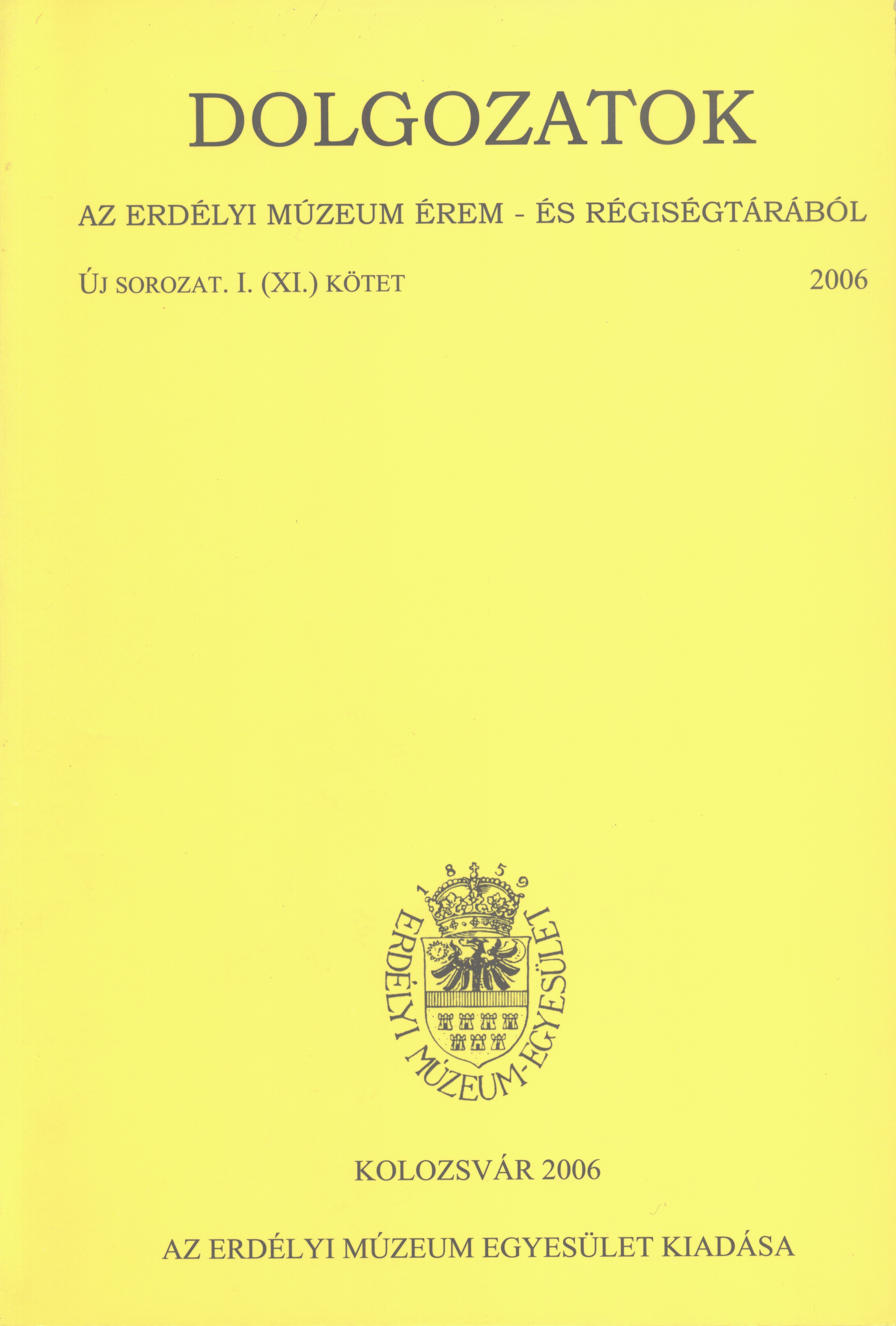Adatok a Nagykárolyi-síkság és az Ér-vidék településhálózatának kutatásához
Data to the research of the Otomani Cultures habitat in the Carei Plain and the Eriu Valley
Author(s): Zsolt Molnár-Kovács, Zoltán ImecsSubject(s): Archaeology
Published by: Erdélyi Múzeum-Egyesület
Keywords: Bronze Age; Ottomani Culture; Carei Plain; Eriu Valley; habitat
Summary/Abstract: During the Middle Bronze Age the Carpathian-Basin resembles from the cultural point of view to a mosaic. Despite the fact that every community has developed a specific material culture in this chronological sequence we may still talk about a so-called tells' society" based on the social and economic macro features. This type of habitat is specific for the region under study and for the great Hungarian Plain, too. In these areas during the Middle Bronze Age has been created a "cultural complex" characterized by the homogeneity of pottery and bronze metallurgy. The aim of this study is to present a hypothetical image of the Middle Bronze Age landscape of the Carei Plain and the valley of the Eriu River. The starting point was the exhaustive recording of the Otomani settlements (mapping, visiting and photographing each site, analysing archaeological evidence). 80 settlements have been identified in this area. The list of sites is far to be complete, but it still does reflect the actual state of the research. The study of the settlement systems and networks of interacting polities is a window on the historical development of social complexity and hierarchy. The evolution of Middle Bronze Age complex and hierarchical societies from north-west Romania and the analysis of their social-political system are presented from a comparative core-periphery-systems perspective. The present approach exploits the conceptual apparatus of the aforementioned theory to examine the patterns of development in prehistoric north-west Romania. Moreover, an overview of research on the core/periphery - world-systems issues is also presented. The idea of core/periphery hierarchy was originally developed to describe the stratified relations of power and dependency among societies in the modern world-system. The new comparative perspective of the world-systems approach developed by scholars like A. Harding can be used properly for the political-social system of the Otomani communities from the Romanian lowlands, where the Middle Bronze Age chiefdoms are strongly linked by local and interregional (cross-cultural) social systems and luxury and barter goods trade networks. To estimate the territorial sizes and boundaries of the Otomani chiefdoms from north-western Romania is very difficult. Therefore, the present study had applied the methods of the XTENT-models, Thiessen-polygons and Central place theory, archaeological data, mathematic calculations and geoinformatics programs. Knowing the environmental background of the Carei Plain and Eriu Valley, the sizes of settlements and the approximate territorial area controlled by them, an interesting (but hypothetical) picture of the political and social development of the Otomani communities can be drawn. Although the research on vestiges of the Otomani communities is facing various difficulties we still can draw some conclusions such as: -within the Carei Plain and Eriu River Valley the makers of the Middle Bronze Age civilization as well as the founders of the tells were the carriers of the Otomani Culture; -in the analysed area the "tell society" is made of hierarchical communities with a settled life and a rural economy. The system of settlements is structured to various sizes of sites, but well organized from the social point of view. Telis were "political" and economic centres. The residential area (the tells) of the local chieftains can be considered centres for the redistribution of goods to the peripheral zones; -based on the theoretical models and archaeological fieldwork two major inhabited areas (Carei Plain and the Valley of Eriu River) and 6 micro regions can be distinguished. Using the methods of XTENT models and Thiessen-polygons we could establish the hypothetical boundaries of each region and their political-hierarchical relations; -in the 2nd period of the Otomani Culture, one can observed the numerical increase of settlements within the Carei Plain as well as in the Eriu River Valley. In the 3rd period of this culture a part of the settlements where abandoned by the Otomani communities. This leaving was probably due to the climatic and environmental changes, as well as for economic reasons. One may assert that the presented findings increase the knowledge concerning the social and economic system of the Middle Bronze Age communities in north-western Transylvania and will provide a starting point for the future research on this matter.
Journal: Dolgozatok az Erdélyi Múzeum Érem- és Régiségtárából. Új sorozat
- Issue Year: 2006
- Issue No: I
- Page Range: 29-66
- Page Count: 37
- Language: Hungarian

